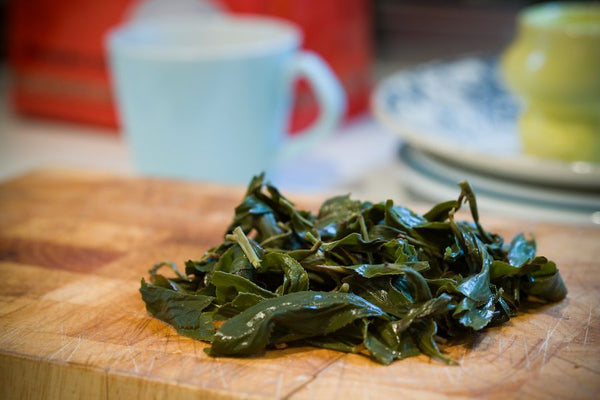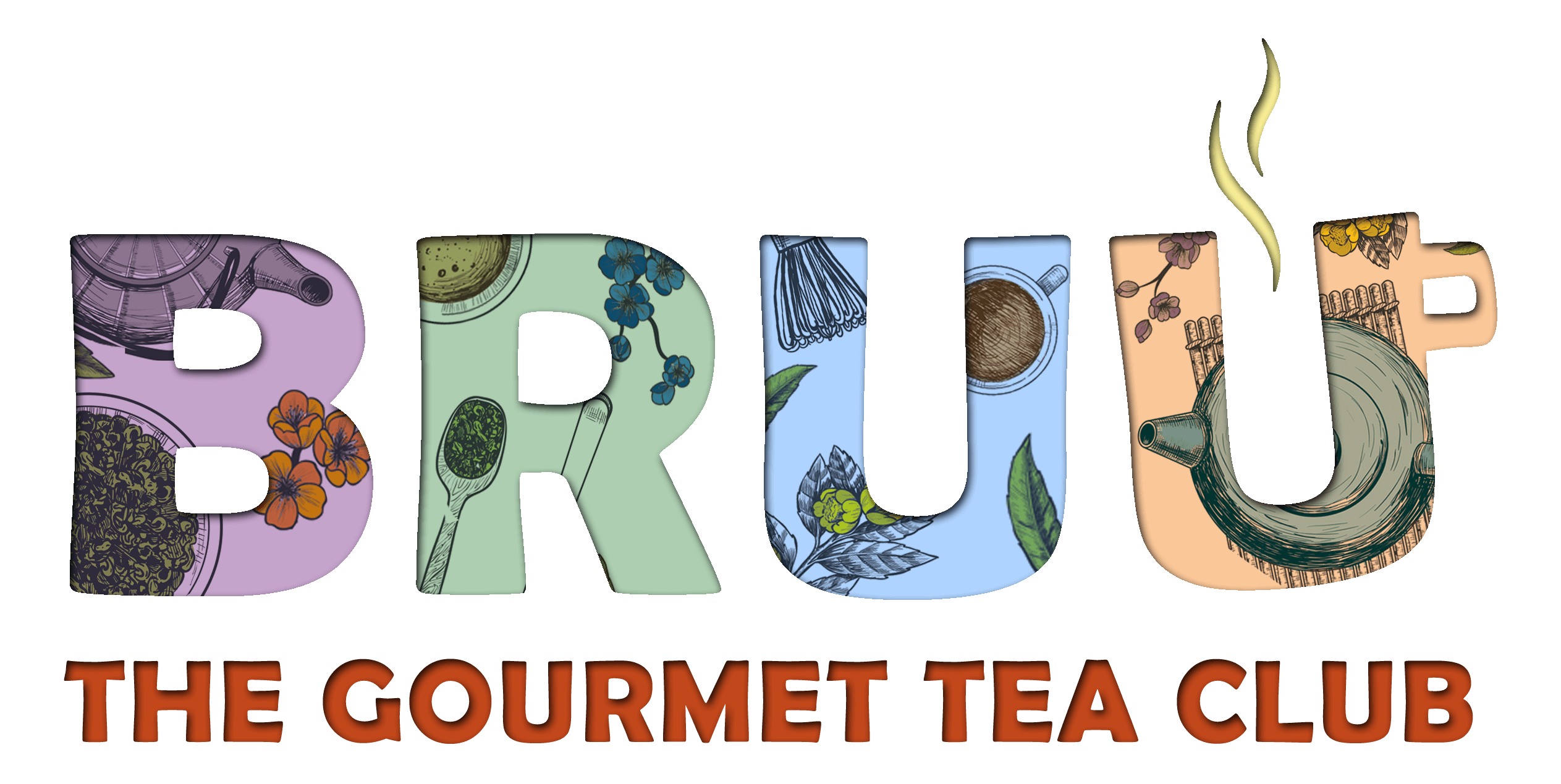Tea and antioxidant properties

Source Tea Advisory Panel
Introduction
Increasing evidence is highlighting the role antioxidants may have in protecting against certain conditions such as heart disease, stroke and cancers. It has been proposed that the mechanisms leading to these diseases may be promoted by free radicals and that antioxidants may oppose the action of these molecules. In addition to the well known antioxidants such as Vitamins C and E, there is growing research demonstrating the potentially beneficial effects of plant-derived antioxidants, polyphenols, found in fruits, vegetables, nuts, cereals and drinks such as tea and red wine.
Free radicals explained
Free radicals are unstable molecules that include the hydrogen atom, nitric oxide (NO) and reactive oxygen species. These naturally occur in the body as a result of chemical reactions during normal cellular processes. They can also be formed in response to excess pollution, too much UV sunlight and exposure to cigarette smoke. In an attempt to stabilise, they attack other molecules in the body potentially leading to cell damage and triggering the formation of another free radical resulting in a chain reaction. Some scientists believe that this type of free radical action has been implicated in certain chronic and ageing diseases such as cancer, heart disease, stroke, rheumatoid arthritis, cataracts and Alzheimer’s disease.
Protective mechanisms of antioxidants
Antioxidants are compounds that help to inhibit the many oxidation reactions caused by free radicals thereby preventing or delaying damage to the cells and tissues. Their mechanisms of action include:-
- Scavenging reactive oxygen and nitrogen free radical species
- Decreasing the localised oxygen concentration thereby reducing molecular oxygen’s oxidation potential
- Metabolising lipid peroxides to non-radical products
- Chelating metal ions to prevent the generation of free radicals
In this way antioxidants limit the free radical damage from:-
- Oxidising Low Density Lipoprotein (LDL) cholesterol, which may increase the risk of athersclerosis
- Promoting platelet adhesion, which can lead to thrombosis thereby increasing the risk of heart disease or stroke
- Damaging the cell’s DNA, which may lead to cancer
- Blocking the normal endothelial cell function and vasodilatation in response to nitric oxide, a potential mechanism for heart disease and cancer
- Triggering inflammation
- Impairing immune function
Some antioxidants are synthesised within the cells themselves (endogenous) and others need to be provided in the diet. Table 1 gives examples of antioxidants with established or proposed activity in the body.
Table 1
|
Endogenous Antioxidants |
Antioxidants provided in the diet |
|
Polyamines Melatonin Oestrogen Superoxide dismutase Glutathione peroxidase Catalase Lipoic Acid Caeruloplasmin Albumin Lactoferrin Transferrin
|
Vitamin E Vitamin C Carotenoids Polyphenols Copper |
Sources of dietary antioxidants
Traditionally dietary antioxidants were thought of as Vitamin E and C and the carotenoid b- carotene. In recent years there has been particular interest in the antioxidant activity and health benefits of other phytochemicals. Table 2 lists two examples of phytochemicals and their food sources.
Table 2
|
Phytochemical |
Categories |
Sub-category |
Food Sources |
|
Carotenoids |
Carotene |
a-carotene |
Carrots, pumpkins, avocados |
|
|
|
b- carotene |
Carrots, red peppers, apricots, spinach |
|
|
Lycopene |
|
Tomatoes, pink grapefruit, watermelons |
|
|
Lutein
|
|
Spinach, kale, brussel sprouts |
|
Polyphenols |
Flavonoids |
Anthocyanins |
Berries, red wine, black grapes |
|
|
|
Flavones |
Celery, parsley, olives |
|
|
|
Flavonols; Quercetin, Rutin |
Tea, apples, onions, wine, garlic |
|
|
|
Flavanols; Catechins |
Tea, wine, pears, apples, chocolate |
|
|
|
Flavanones |
Citrus fruit |
|
|
|
Isoflavones |
Legumes |
|
|
Phenolic Acids |
Hydroxybenzoic Acid; Gallic Acid, Ellagic Acid, Salicylic Acid, Caffeic Acid |
Berries, Tea, Grapes, Walnuts |
|
|
Other Phenolic compounds |
Capsaicin |
Chillies, Peppers |
|
|
|
Tannins |
Tea, red wine, grapes |
Tea has one of the highest total flavonoid contents of all plants at 15% of the leaf by dry weight[1] and is also the major source of flavonoids in the UK diet, providing approximately 80% of dietary flavonoids for the population as a whole.1 According to a survey conducted by MAFF, approximately 30mg of flavonoids/ person/ day is consumed in the UK.[2]
Tea Flavonoids
The types and amounts of flavonoids present in tea will differ dependent on the variety of leaf, growing environment, processing, manufacturing, particle size of ground tea leaves and infusion preparation.[3],[4],[5] Green teas contain more of the simple flavonoids called catechins, while the oxidisation that the leaves undergo to make black tea converts these simple flavonoids to the more complex varieties called theaflavins and thearubigins. For more information about green and black teas please refer to the fact sheet ‘Black and Green Tea: How do they differ?’
Tea flavonoids are water-soluble and one study1 has shown that a cup of UK tea that has been allowed to brew for 40-60 seconds will typically deliver approximately 140mg of flavonoids, whilst a second carried out by the UK Tea Trade Technical Committee[6] using typical UK consumer brewing conditions and encompassing the range of blends and bag weights commonly on sale in the UK gives a figure of 125mg/ 235ml serving. The longer the tea is left to brew, the higher the concentration of flavonoids.5
Tea flavonoids, in both green tea and black tea, demonstrate antioxidant activity[7],[8],[9],[10],[11],[12],[13] and while not a replacement for fruit and vegetables, the antioxidant activity of tea has been compared to that of fruit and vegetables in a number of studies. One study concluded that 3 cups of tea a day has approximately the same antioxidant power as eating six apples.[14] Another study found that one or two cups of tea has the same ‘radical scavenging capacity’ as five portions of fruit and vegetables or 400mg vitamin C equivalents.[15] In fact many common flavonoids are several times more potent than Vitamin C or E.[16],[17]
Health benefits of tea flavonoids
The antioxidant activity and potential health benefits of flavonoids has been well documented and extensively reviewed in the literature.[18],[19],[20],[21] Interest in this field has resulted in a growth in the amount of research being undertaken in the area of flavonoids and heart disease, cancer and oral health. For more information on these topics please refer to the fact sheets, ‘Tea and Cardiovascular Disease’, ‘Tea and Cancer’ and ‘Tea and Oral Health’.
Furthermore, because of the accumulating evidence to suggest that oxidative stress plays a pivotal role in neurodegenerative diseases, the effect of tea’s polyphenols are now being considered as possible neuroprotective agents in progressive neurodegenerative disorders such as Parkinson's and Alzheimer's diseases. Recent epidemiological studies have shown a reduced risk of Parkinson’s disease associated with the consumption of 2 or more cups of tea a day,[22] as well as a significant reduction of Parkinson’s disease risk in tea drinkers in a Chinese population.[23] As well as antioxidant properties, animal and in-vitro studies suggest that certain polyphenols found in tea may have a protective role through their action on cell signalling pathways as well as their influence on the mortality of neuronal cells.[24] However, well controlled, in vivo studies are required to further understand the action of tea polyphenols in the brain.
Absorption of tea flavonoids
Until recently the majority of the research demonstrating the antioxidant activity of tea flavonoids was either using animal models or laboratory cellular studies. Increasing numbers of human studies are now concluding that the body does in fact absorb some of these antioxidants.[25],[26],[27],[28],[29],[30],[31] For example, enhanced plasma levels of catechins have consistently been found following the consumption of green and black tea, ranging from 0.63–1.8 µmol/L for green and 0.2–0.34 µmol/L for black tea. The plasma levels peaked after 1.5–2.6 hours and were back to baseline within 24 hours. Further research is currently being undertaken on the metabolism, distribution and excretion of tea flavonoids and its metabolites.
As well as being absorbed these flavonoids demonstrate antioxidative potential in vivo. 10,11,25,26,[32],[33],[34] A number of studies have shown that plasma antioxidant activity peaks 30-60 minutes after moderate tea consumption (1-6 cups). Despite plasma catechin levels being higher following the consumption of green tea compared to black tea, their antioxidant activity is similar.12,18 This finding has led to the suggestion that the theaflavins and thearubigens in black tea also have antioxidative potential.[35]
The addition of milk to tea, as enjoyed by the majority of the UK population, does not appear to affect the bioavailabilty or antioxidant activity of the tea flavonoids. 25,26,[36],[37]
In summary…
It is well known that fruit and vegetables are good sources of antioxidants, however what is less well known is the presence of antioxidants in tea. The major group of antioxidants in tea are flavonoids that appear to be digested, absorbed and metabolised by the body. Furthermore, as well as demonstrating antioxidant activity in vitro they also appear to have antioxidative potential in vivo. The benefit this action may have to promoting good health provides a promising area of research for future human studies.
So as well as eating more fruit and vegetables, antioxidant intake can be topped up by drinking more tea, helping to promote overall health and well-being.
References:
[1] Lakenbrink C et al. (2000) Flavonoids and other polyphenols in consumer brews of tea and other caffeinated beverages. J Agric Food Chem, 48; 2848-2852
[2] Shepherd MJ and Ibe F (1995) Flavonoids in the UK total diet samples. MAFF
[3] Wang H, at al (2001) Determination of flavonols in green and black tea leaves and green tea infusions by high performance liquid chromatography. Food Research International 34; 2-3:223-227
[4] Astill C, et al (2001) Factors affecting the caffeine and poyphenol contents of black and green tea infusions. J Agric Food Chem 49 (11): 5340-7
[5] Englehardt, U et al (1999) Caffeinated Beverages Symposium, 219th American Chemical Society Meeting. Anaheim, USA.
[6] Personal communication from UK Tea Trade Technical Committee
[7] Sarkar A, et al (2001) Black tea is a powerful chemopreventor of reactive oxygen and nitrogen species: comparison with its individual catechin constituents in green tea. Biochem. Biophyss. Res. Commun 284 (1): 173-178
[8] Karakaya S, et al (2001) Antioxidant activity of some foods containing phenolic compounds. Int J Food Science 52(6): 501-8
[9] Paquay JB, et al (2001) Protection against nitric oxide toxicity by tea. J Agric Food Chem 48(11): 5768-5772
[10] Serafini M, et al (1996) In vivo antioxidant effect of green and black tea in man. Eur J Clin Nutr 50;28-32
[11] Langley-Evans SC. (2000) Consumption of black tea elicits an increase in plasma antioxidant potential in humans. Int J Food Sc Nutr 51; 309-15
[12] Leung LK, et al (2001) Theaflavins in black tea and catechins in green tea are equally effective antioxidants. J Nutr 131(9); 2248-51
[13] Erba D, et al (2005) Effectiveness of moderate green tea consumption on antioxidative status and plasma lipid profile in humans. J Nutr Biochem 16; 144-149
[14] Papanga G, et al (1999) The polyphenolic content of fruit and vegetables and their antioxidant activities. What does a serving constitute? Free Rad Res 30(2): 153-162
[15] Du Toit R, et al (2001) Comparison of the antioxidant content of fruits, vegetables and teas measured as Vitamin C equivalents. Toxicology 166 (1-2): 63-9
[16] Vinson JA, et al (1995) Plant flavonoids, especially tea flavonols, are powerful antioxidants using an in vitro oxidation model for heart disease. J Agric Food Chem 43 (11):2800-2802
[17] Rice- Evans CA, et al (1995) The relative antioxidant activities of plant derived polyphenolic flavonoids. Free Rad Res 2214 (4): 375-383
[18] Luczaj W, Skrzydlewska E (2005) Antioxidative properties of black tea. Prev Med 40; 910-918
[19] Siddiqui IA, et al (2004) Antioxidants of the Beverage Tea in Promotion of Human Health. Antioxidants & Redox Signaling 6; 571-582
[20] McKay DL, and Blumberg JB (2002)The Role of Tea in Human Health: An Update JACN 21:1-13
[21] Rietveld A, Wiseman S (2003) Antioxidant Effects of Tea: Evidence from Human Clinical Trials J. Nutr. 133: 3285S-3292S
[22] H. Checkoway, K. Powers, T. Smith-Weller, G.M. Franklin, W.T. Longstreth, Jr and P.D. Swanson (2002) Parkinson's disease risks associated with cigarette smoking, alcohol consumption, and caffeine intake. Am J Epidemiol 155; 732–738.
[23] E.K. Tan, C. Tan, S.M. Fook-Chong, S.Y. Lum, A. Chai, H. Chung, H. Shen, Y. Zhao, M.L. Teoh, Y. Yih, R. Pavanni, V.R. Chandran and M.C. Wong (2003) Dose-dependent protective effect of coffee, tea, and smoking in Parkinson's disease: a study in ethnic Chinese. J Neurol Sci 216; 163–167
[24] Weinreb O, et al (2004) Neurological mechanisms of green tea polyphenols in Alzheimer's and Parkinson's diseases. J Nutr Biochem. 15(9): 506-16.
25 van het Hof K, et al. (1998) Bioavailability of catechins from tea; the effect of milk. Eur J Clin Nut, 52: 356
[26] Leenen R, et al. (2000) A single dose of tea with or without milk increases plasma antioxidant activity in humans. Eur J Clin Nutr 54; 87
[27] Warden BA, et al. (2001) Catechins are bioavailable in men and women drinking black tea throughout the day. J Nutr, 131(6), 1731-7
[28] Sharzad S, et al (2001) Pharmokinetics of gallic acid and its relative bioavailability from tea in healthy humans. J Nutr 131(4):1207-10
[29] Pietta PG, et al (1998) Catechin metabolites after intake of green tea infusions. Biofactor 8; 111-8
[30] Nakagawa K, et al (1997) Dose-dependent incorporation of tea catechins, (-)- epigallocatechin-3-gallate and (-)-epigallocatechin, into human plasma. Biosc Biotech Biochem 61; 1981-5
[31] Yang CS, et al (1999) Inhibition of carcinogenesis by tea; bioavailability of tea polyphenols and mechanisms of actions. Proc Soc Exper Biol Med 220; 213-7
[32] Hodgson, J. M., Puddey, I. B., Croft, K. D., Burke, V., Mori, T. A., Caccetta, R. A. & Beilin, L. J. (2000) Acute effects of ingestion of black and green tea on lipoprotein oxidation. Am. J. Clin. Nutr. 71:1103-1107.
[33]Sung, H., Nah, J., Chun, S., Park, H., Yang, S. E. & Min, W. K. (2000) In vivo antioxidant effect of green tea. Eur. J. Clin. Nutr. 54: 527-529
[34]Benzie, I. F., Szeto, Y. T., Strain, J. J. & Tomlinson, B. (1999) Consumption of green tea causes rapid increase in plasma antioxidant power in humans. Nutr. Cancer 34: 83-87
[35] Stewart AJ, et al (2005) On-line high performance liquid chromatography analysis of the antioxidant activity of phenolic compounds in green and black tea. Mol Nutr food Res 49; 52-60
[36] Reddy VC, et al (2005) Addition of milk does not alter the antioxidant activity of black tea. Ann Nutr Met 49;189-195
[37] Hollman PC, et al. (2001) Addition of milk does not affect the absorption of flavonols from tea in man. Free Radical Res 34; 297



